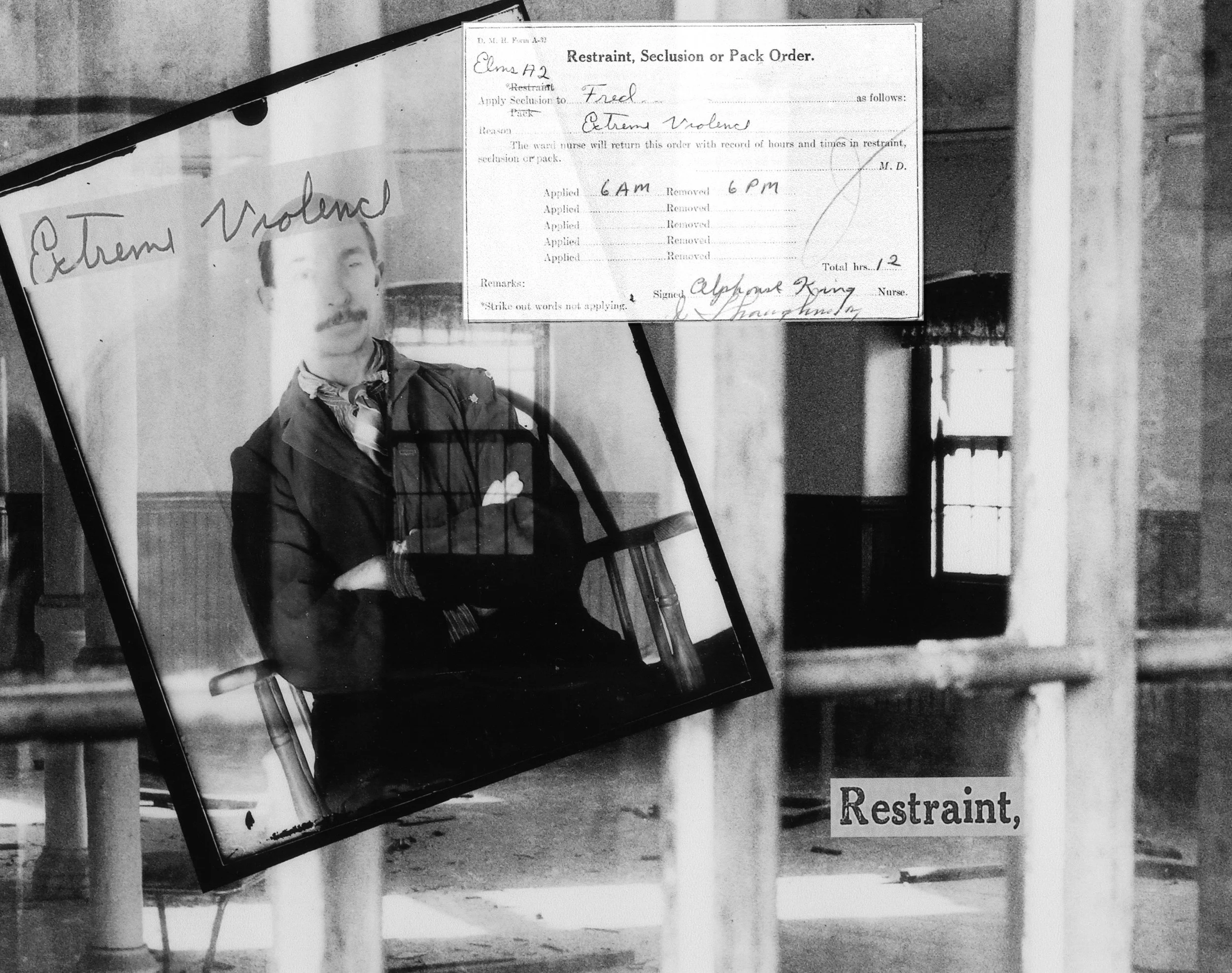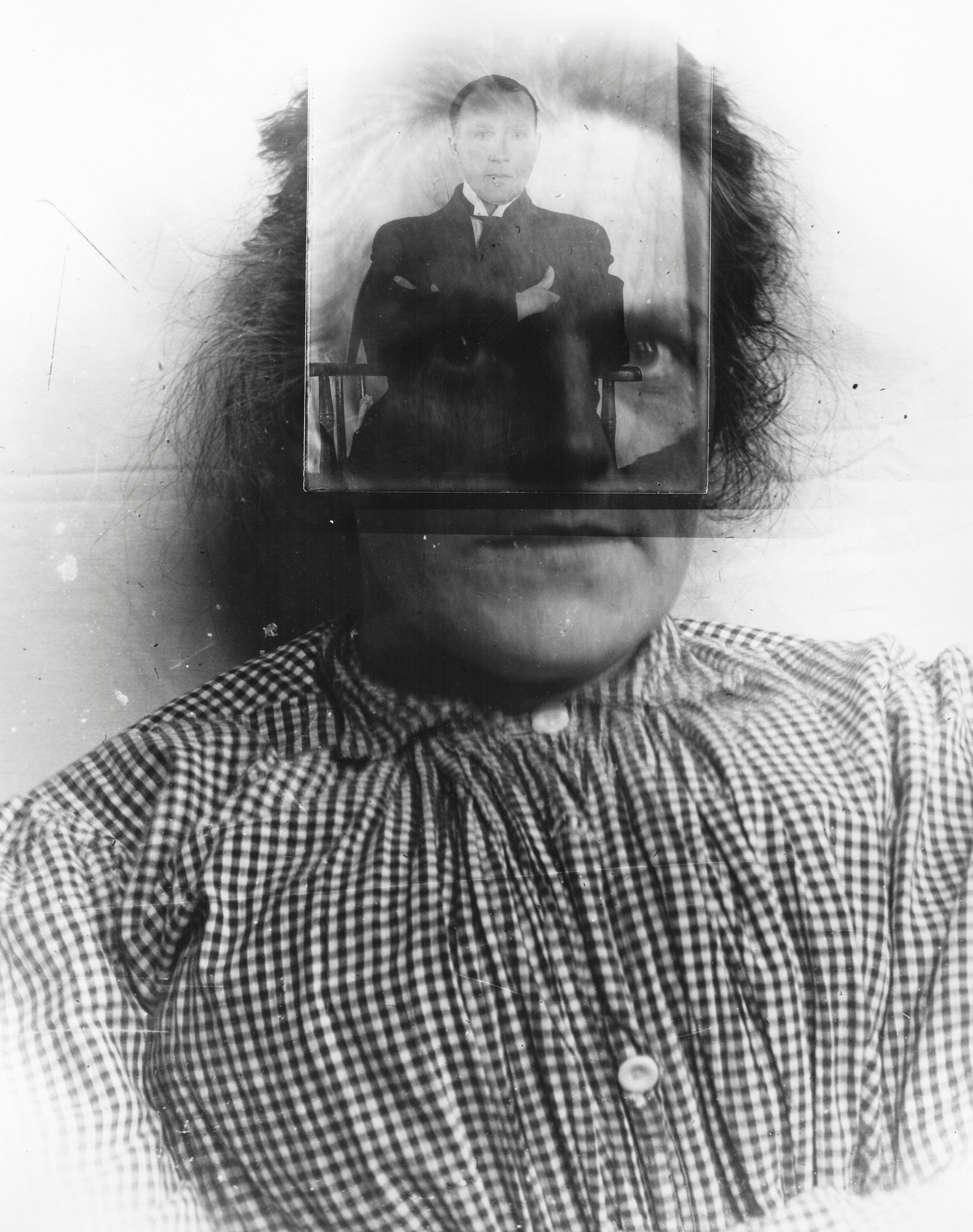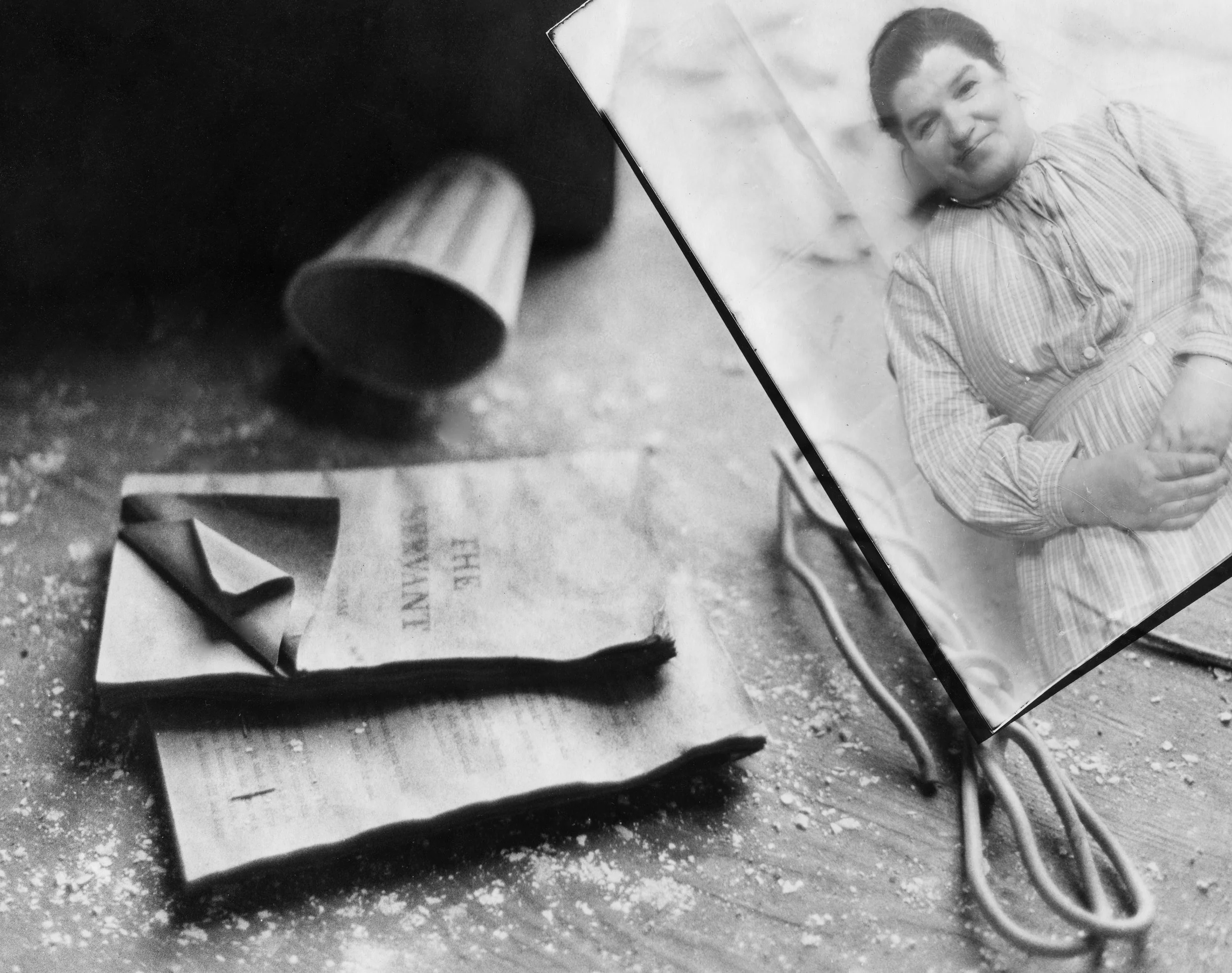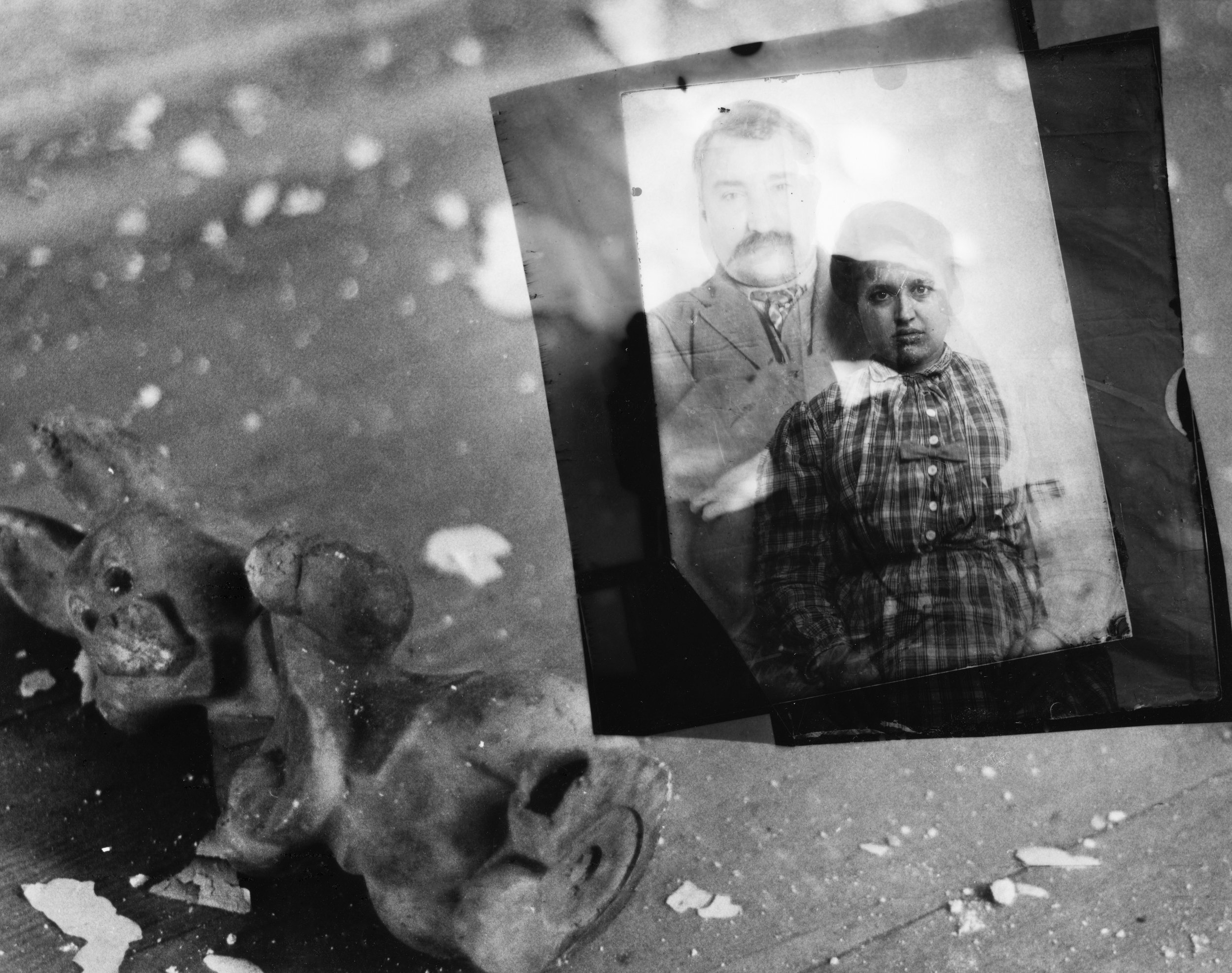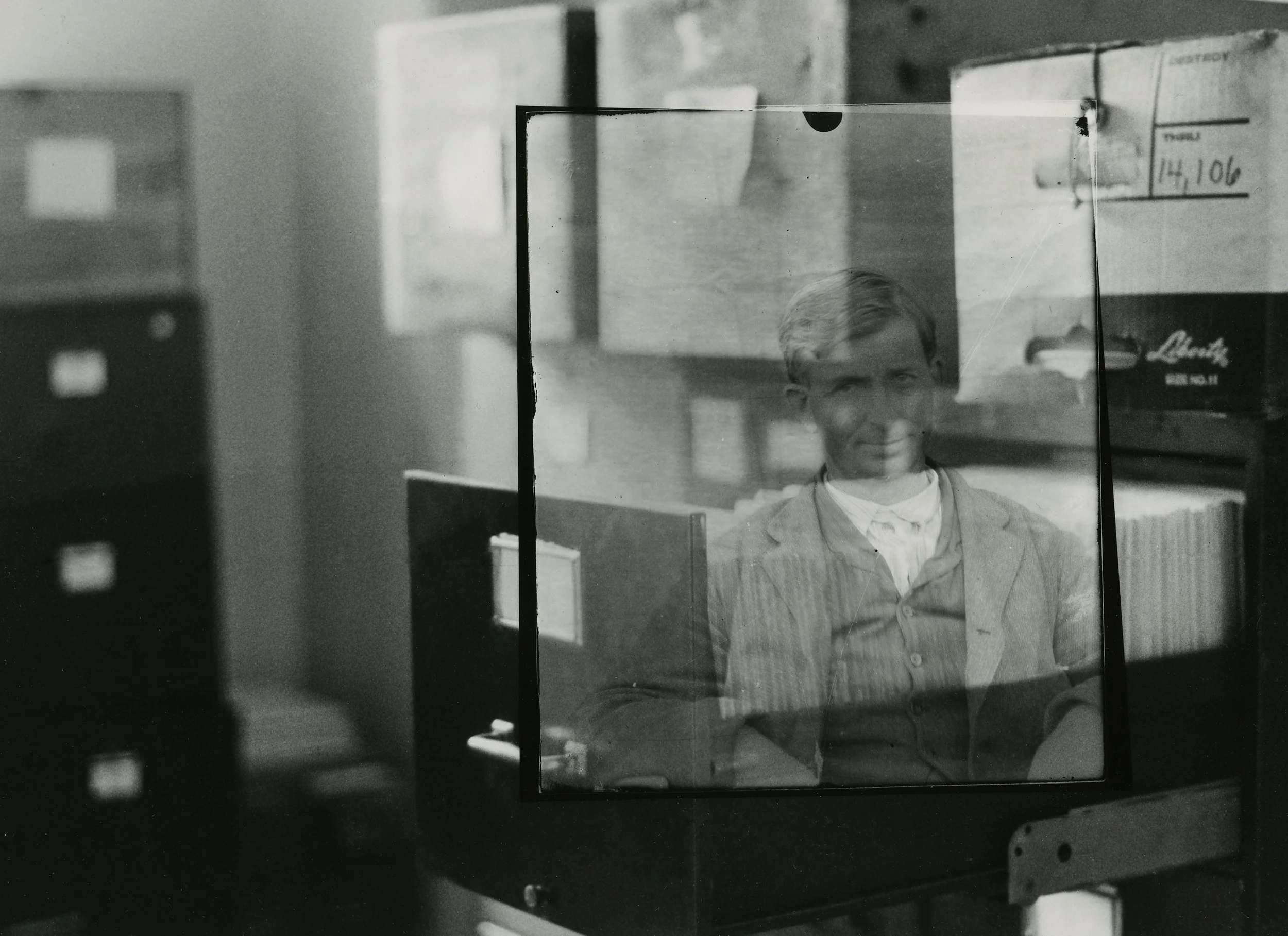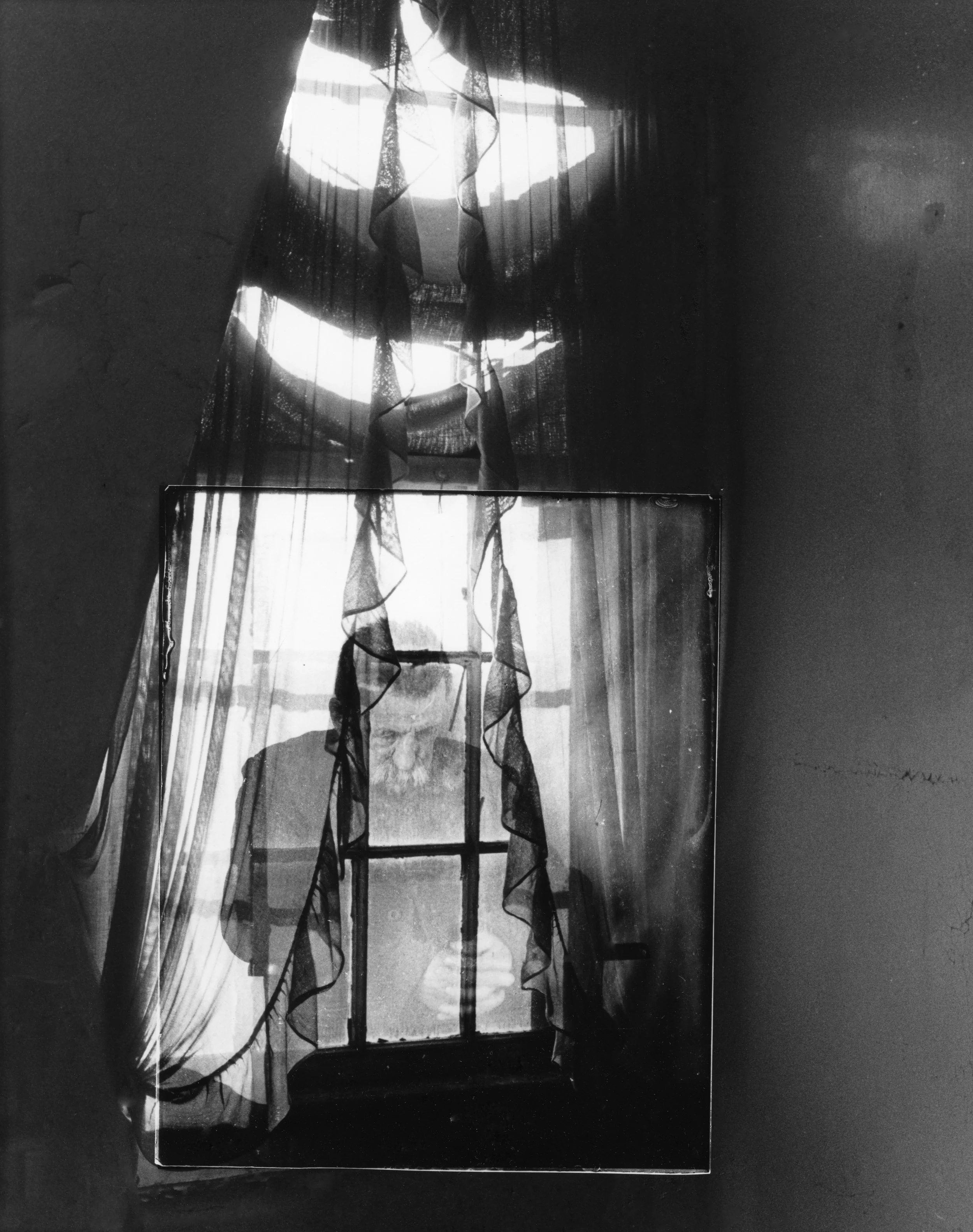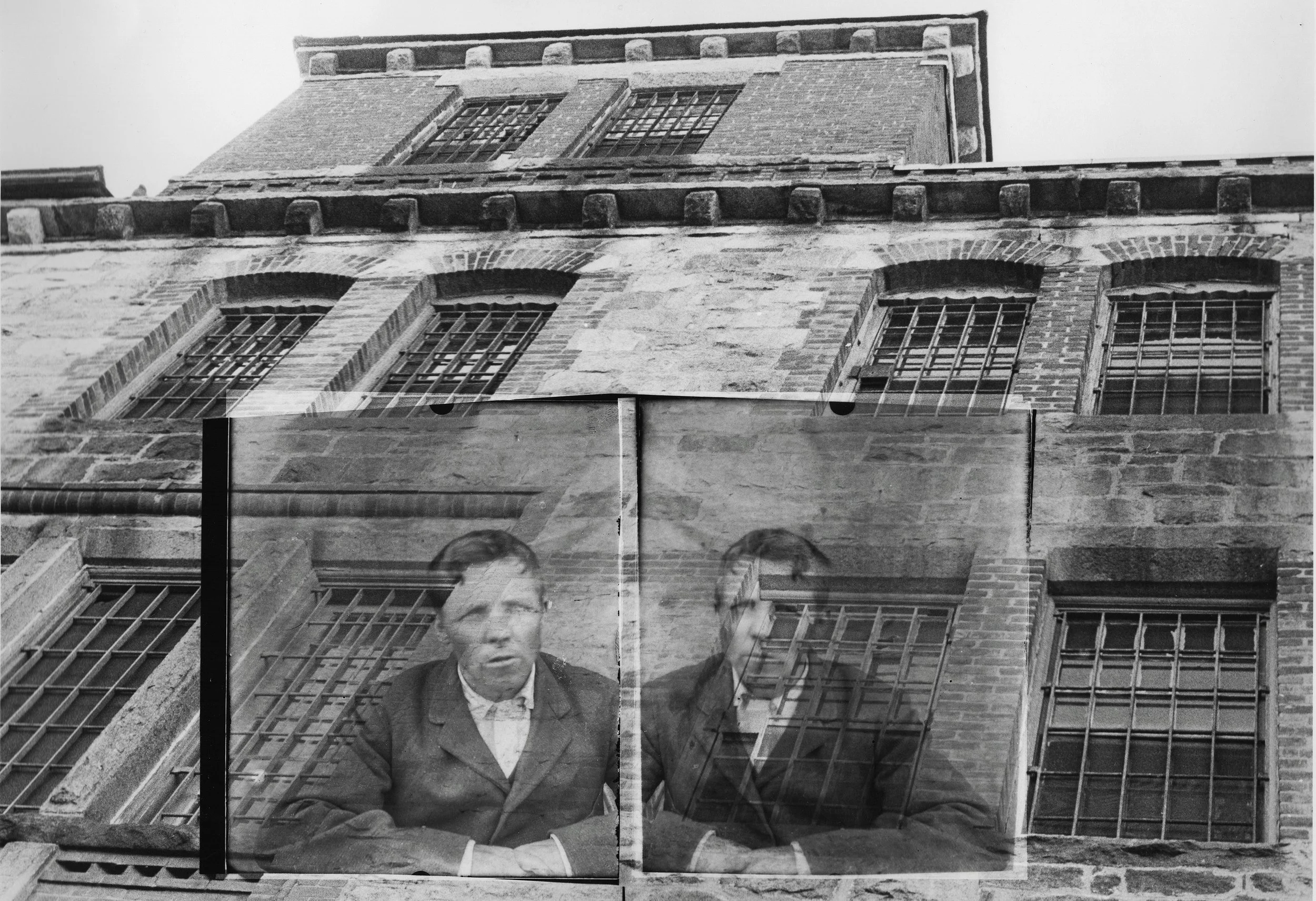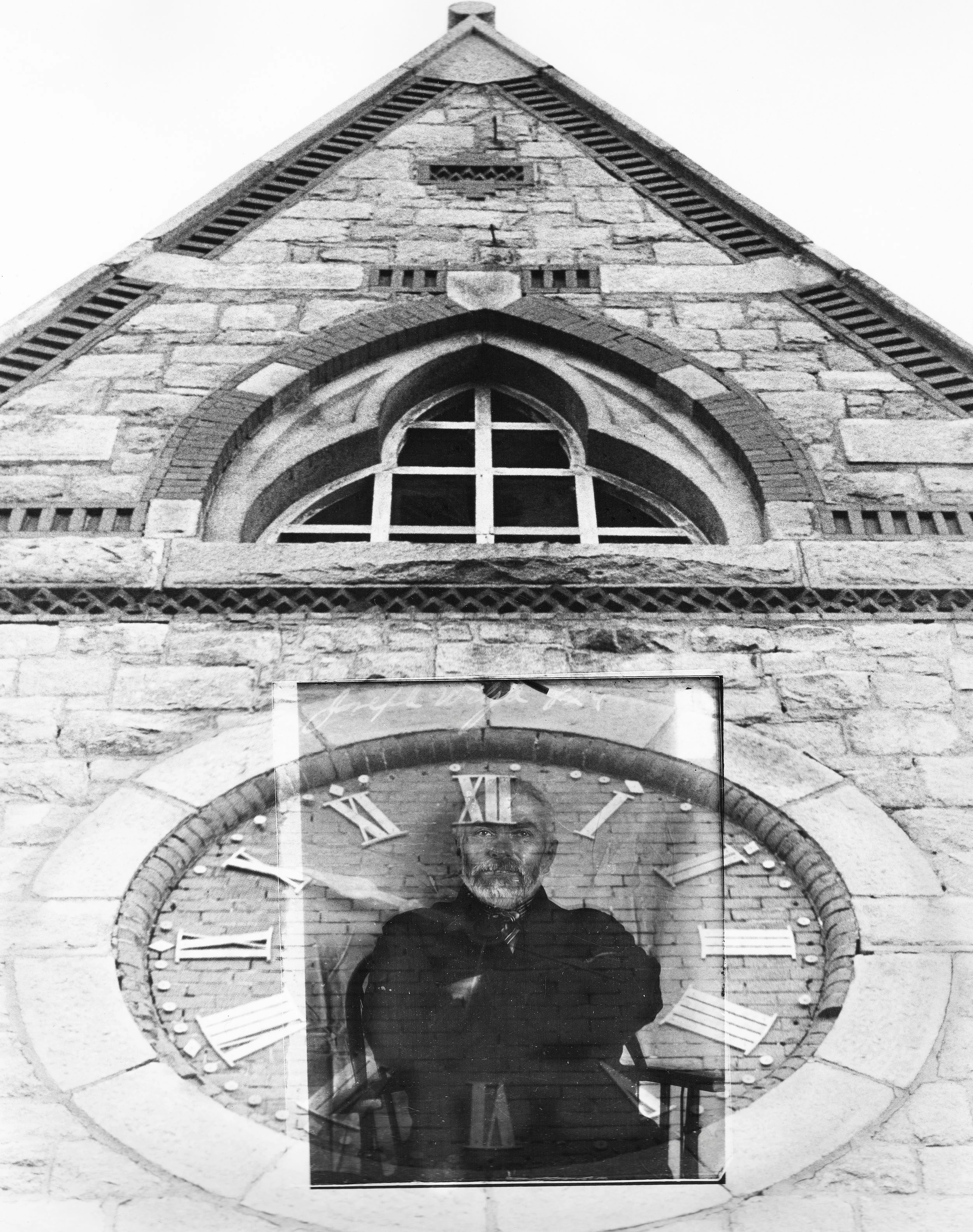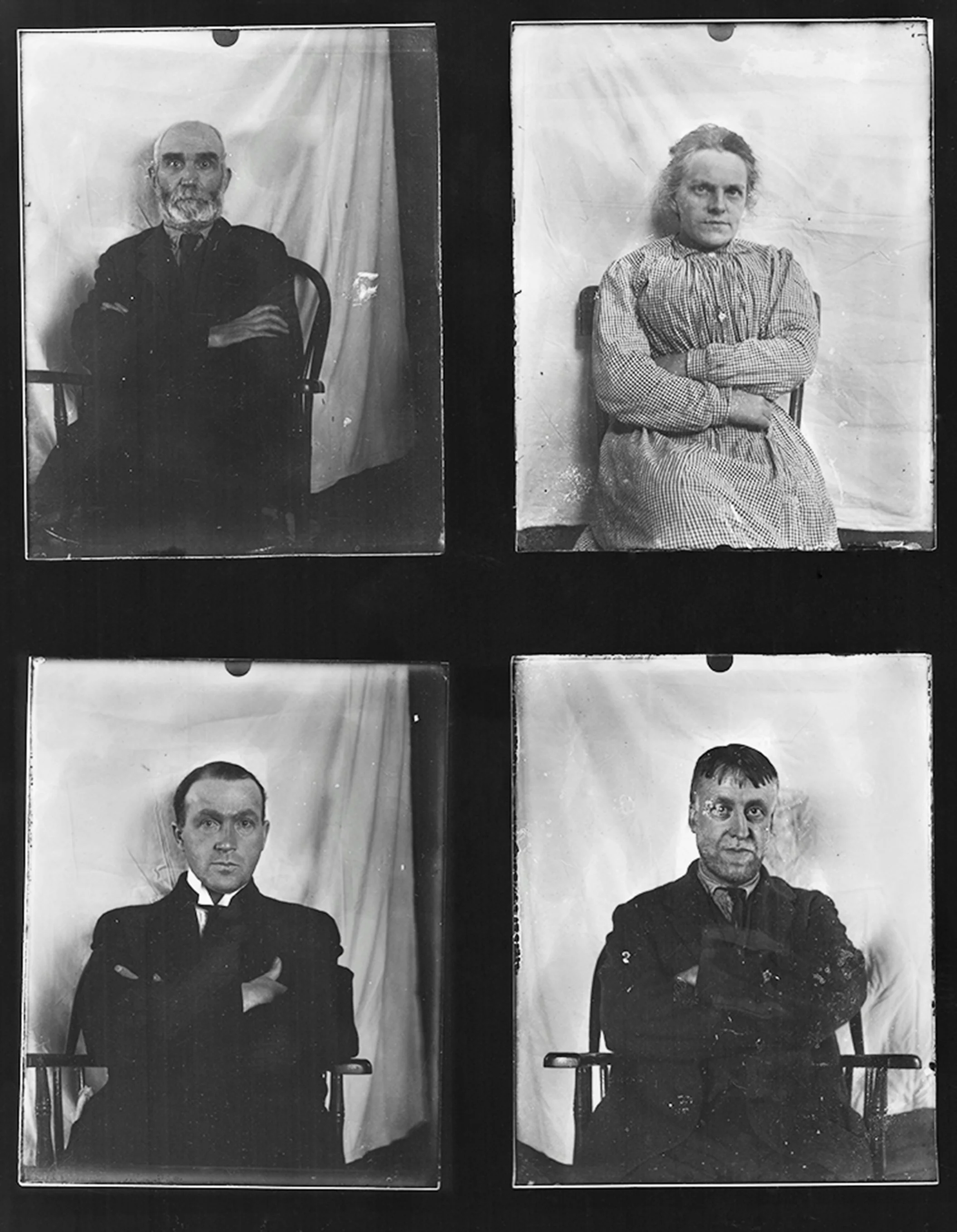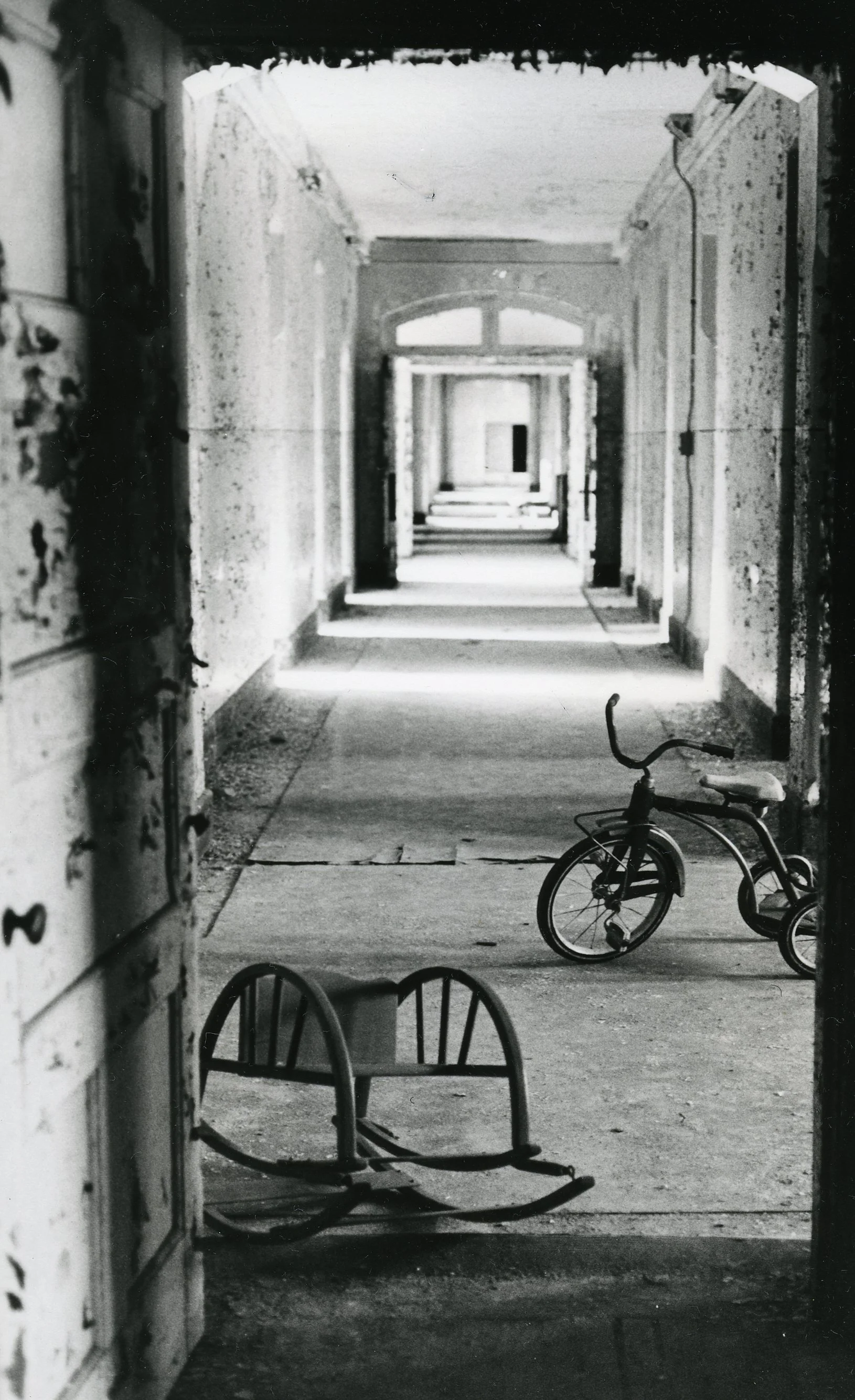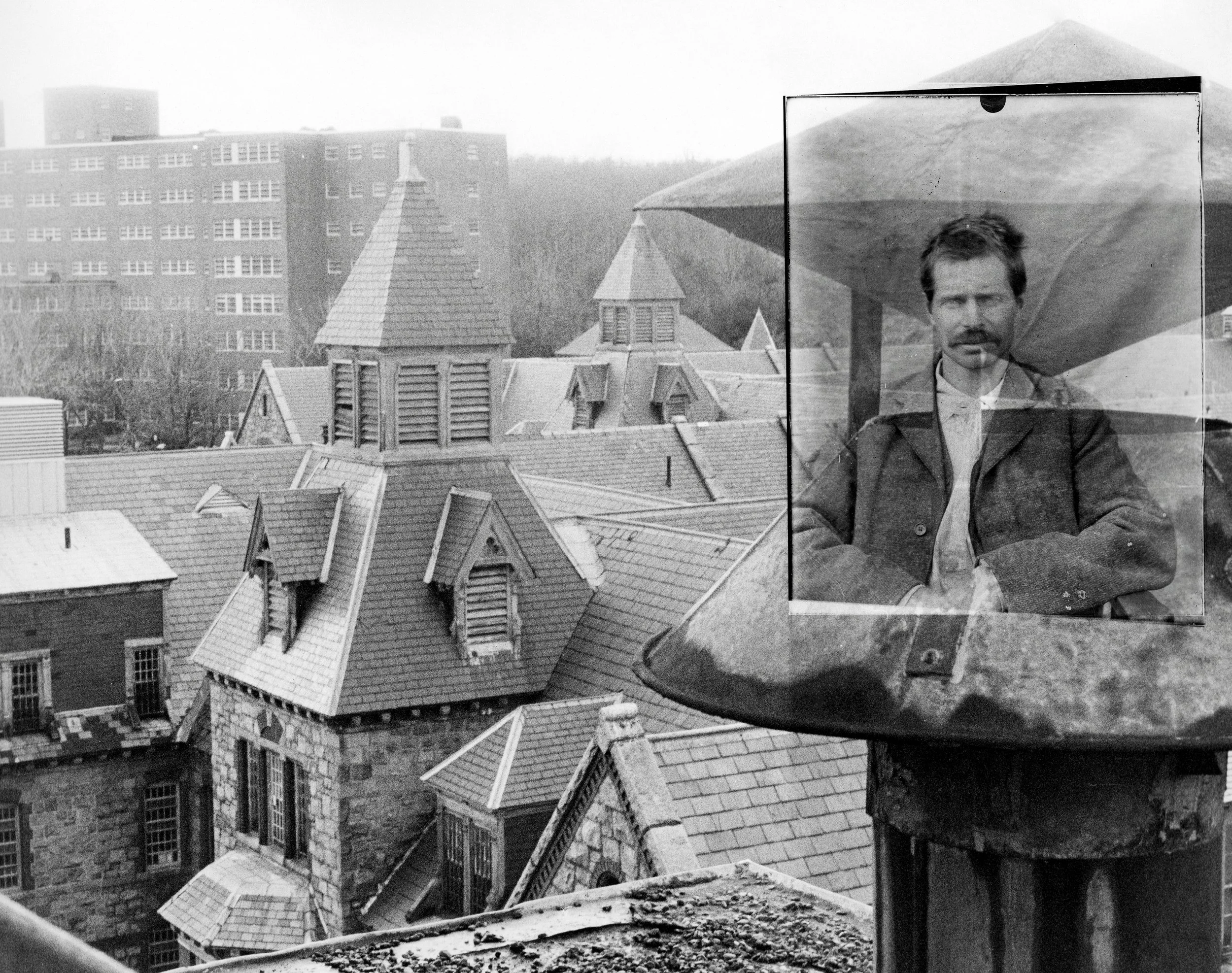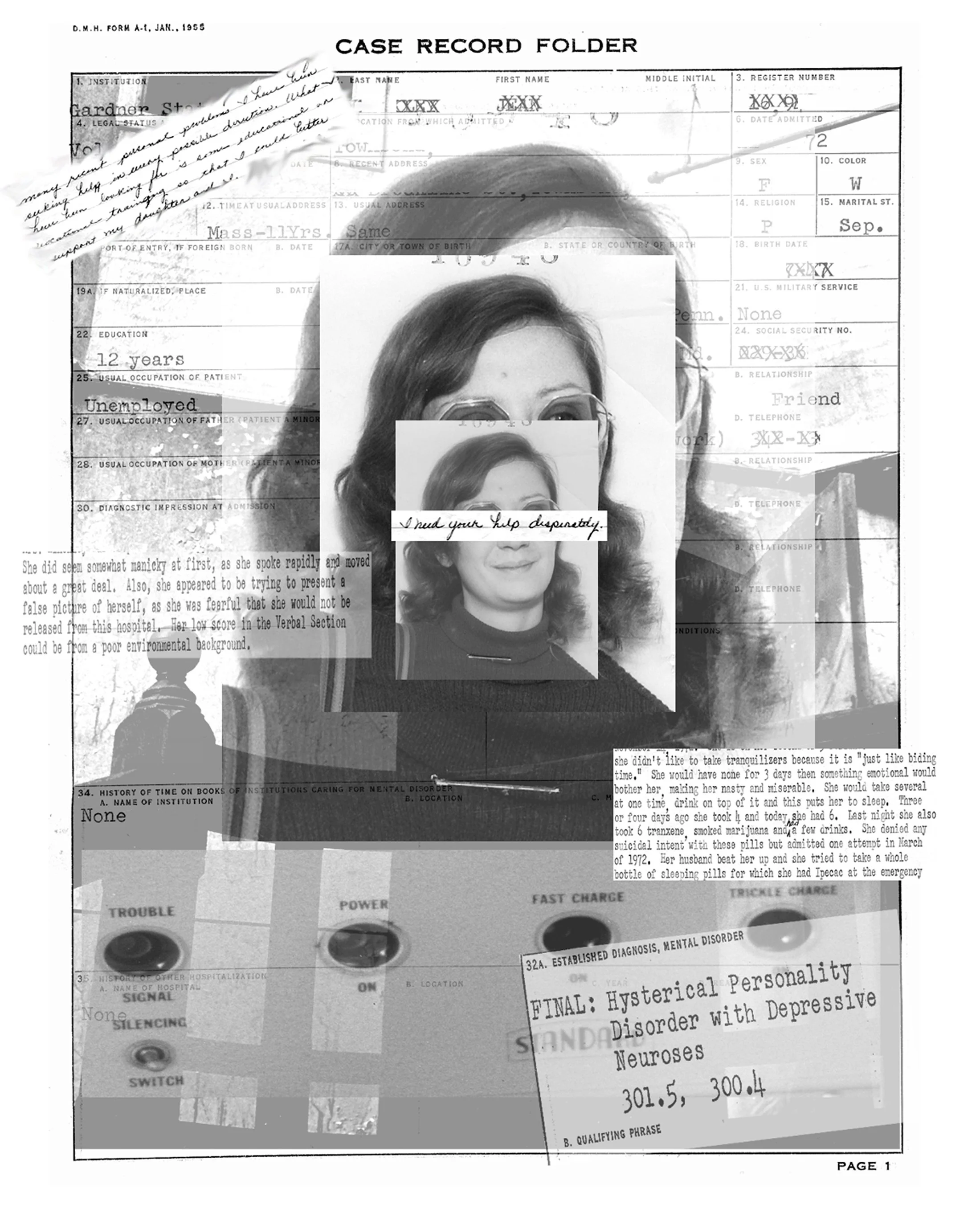Worchester Asylum
These collages combine photographs taken at the abandoned Worcester State Mental Hospital in Massachusetts and glass plate images of its patients. At one time, the hospital had been a self-sufficient institution, housing thousands of patients including children. Almost one hundred years later the Asylum closed down as if in a hurry, leaving behind treatment equipment, case files, and the unsettled phantoms of the patients who stayed there.
This project tells the story of mental illness and also of individuals, imprisoned, ostracized, and abused by a culture who labeled them not with an illness but as an illness. Some were merely sent to the asylum for being outspoken, others were imprisoned for being from another country or because they were women.
The collage uses discarded glass plate images of patients from Worcester Insane Asylum. They were combined with my own photographs of the abandoned hospital.
Most of the collages were created by placing the glass plates, sight unseen, directly onto the photographic paper in the darkroom. The resulting image was as if the patients were narrating their story – ghosts whispering their tale.
Her Whispers – The abandoned hospital had furniture, equipment, and fragments of people lives still there as if they would be back. The rooms were filled with ghosts and the whisperings of dreams and sorrows. A fragility and tenderness in decay but still existing.
Extreme Violence – There was no real treatment for anger and fear. All that hospitals would do was to tie up and isolate. The patient would be imprisoned with his demons for hours into infinity.
Keenest Wounds – “Spirit wrongs are the keenest wounds that can be inflicted upon woman.” Elizabeth P. refused to let Theophilus enslave her mind so he incarcerated her at the insane asylum. Unable to hear her babies’ cries, all she heard were the sobs of her peers as their thoughts twisted. When Elizabeth P. freed herself, she kept calling out to emancipate women whose opinion was treated as lunatic.
The Servant – Mary wanted to please and do what was asked of her, but it was hard for her to stay focused. She just didn’t understand simple things. She became a burden and then she became institutionalized. For the rest of her life she was bound to the hospital.
Detritus – Domingo Depina, patient 1268’s name meant Sunday of Sorrow. But sadness wasn’t why he didn’t speak at the factory. He kept quite as he didn’t know English. Yelling at him, Domingo just stood there, so they put him away. Years later they let him go from the insane asylum. He could say “hello” and “please” by then.
He Left Me There – Mental hospitals were filled with women who didn’t always have a mental condition. They became a catchment for women deemed “difficult.” At the hospital sometimes they could keep their children with them, sometimes they would never see their families again.
On File – For many institutionalized patients some of who spend their wholes lives in the hospital, their journey is not chronicled but compartmentalized into a diagnosis which is then put away in alphabetical order in the cabinet. The files in this image are of actual patients, including the man pictured, which were left behind when the hospital was abandoned.
Broken Child – It wasn’t until she was a grown woman that the child within her finally came out from hiding. Only when she was in the safety of the hospital could the child shyly speak of all that had happened. As a woman, she died of a broken heart, but she remained as a child. As patients from the 1800's, their condition is evident in the depth of their eyes and body language.
Withdrawn – It didn’t matter where he was, Charles would not be there. He couldn’t be reached.
Duplicity – When the memories got too close, Billie closed the door and let William handle things. This defense was impenetrable. The outside world thought he/they needed to be behind bars.
Shattered – For some, when they break there is no being put back together. For some, their mind has always been fragmented and is unable to approach life in a single unified way. The hospital can be sanctuary. It can be prison.
With Folded Arms – The language of their body speaks for these mentally ill patients. Do they use their folded arms for protection or to keep their madness from spilling out?
Children’s Ward – How young were they when they went in? Some children were sent alone with a diagnosis and other children accompanied their mothers, all to formulate their life within the insane asylum.
On the Roof – Ghosts from the old insane asylum look out at the newer hospital nearby. Abandoned, in decay, it had once been a place where patients grew their own food, tried to heal, and often sank into oblivion.
Maladjustment – This collage is of an actual patient file from the Worcester State Hospital detailing his journey of relationship struggles, depression and attempts at suicide all stemming from his feeling inadequate. My photograph was taken in the basement of one of the many buildings at Worcester State which had years before been left unwanted and deserted.
I Need Your Help Desperately – Benefit or trauma, electroshock therapy is a part of the history of mental illness. Women often deemed “hysterical” would be plugged in to tame or treat by the handfuls. At the Worcester State Hospital where these images are from, rooms filled with treatment equipment where left there set up as if to use again. The text and portrait are from an actual patient file from the hospital.


